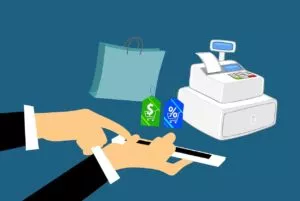Sometimes what seems obvious as a digital marketer is anything but, when it comes to conversion optimization. Understanding the irrational and less obvious biases in our brains and how they impact our decision making is a huge asset in crafting visit experiences that are more likely to convert visitors to customers. For instance, companies that offer products or services with varying levels of features and pricing, typically display the lowest price offer first on their web page. The common thinking is that we don’t want to scare away our prospects by showing the highest priced item first. Seems logical, right? However, due to the way our brains evaluate options, in many cases, that’s actually a flawed strategy.
To understand why, let’s talk about the neuropsychology of human decision making. Think of the last time you test drove a car. Your ability to evaluate how well the car performed, its comfort, efficiency and how well it fit your needs was made much easier when you compared it against another vehicle. That comparison may have been another model you test drove or your current car. In any case, by default, as you tried to determine if this car was right for you, your brain relied on comparing that driving experience to past driving experiences in other cars. It’s just so much easier for our brains to evaluate a product or offer when we have a benchmark or reference to compare against. That benchmark product or offer is what is called an “anchor” and plays a big role in our comparisons.
It turns out that the anchor can have quite an influence on our perception of a product or offer as it creates the initial basis for comparison. Let’s take a look at a couple examples:
Notice how Southwest Airlines displays their fares with the most expensive, Business Select, shown first.
Now to a lot of us, $816 for a one-way ticket from San Diego to New York may seem pretty steep. However, when we see the pricing for those “Business Select” fares, our brains become anchored with that price and then will use it as a reference for evaluating the other pricing. So, in the absence of any other pricing, if we might have originally thought that $390 “Wanna Get Away” fare was high for that same one-way ticket, our reasoning now is that in comparison to the $816 fare, it’s actually quite reasonable. To a lesser extent, the same could be said for how we’d interpret the pricing for the middle column, the “Anytime” fare. Subconsciously, lower prices seen after the anchor price may seem more reasonable than otherwise since we’re now comparing them to the higher rates we’ve previously seen.
Another benefit of anchor pricing is that our consideration of the most expensive option, the “Business Select” fare is increased. To see how, picture seeing the fares in reverse order with Southwest showing the lowest fare first. That $390 fare would then become the anchor. Now when we see the $816 “Business Select” fare, we immediately compare that to the first fare we saw, drawing increased attention to how much higher the “Business Select” fare is in comparison. So, anchor pricing not only makes the lower priced offers seem more attractive, it can also make the anchor offer seem more attractive.
Notice how Apple follows the same practice in their display of iPads, listing them in reverse order of pricing:
There are numerous other examples of anchor pricing on websites, from fast food menus to apartment rentals. It’s important to remember, though, that as with all other conversion optimization tactics, there’s no 100% guarantee of success. The efficacy of anchor pricing will depend on numerous variables including the relative pricing differences of your offerings, competitive alternatives, the absolute price levels and the difference in perceived value of the offerings. In fact, there are rather interesting findings on the willingness to pay for related and unrelated products due to price anchoring in this study by the Journal of Marketing Research. The key is to A/B test with consideration towards separate tests for different visitor segments depending on your business.
Anchor pricing is just one of many online creative persuasion techniques that can profoundly increase conversion rates. If you’d like to discuss which CRO tactics are right for your business, contact us at 760-207-3101.





